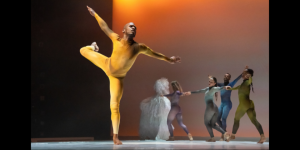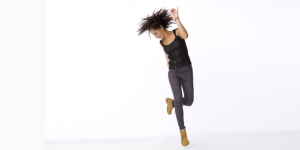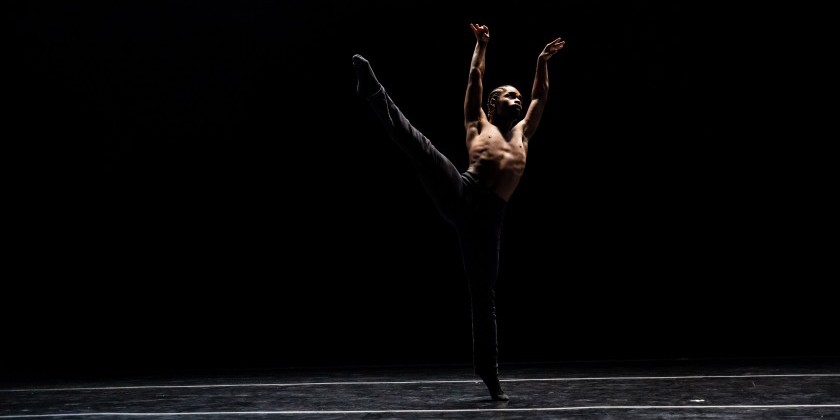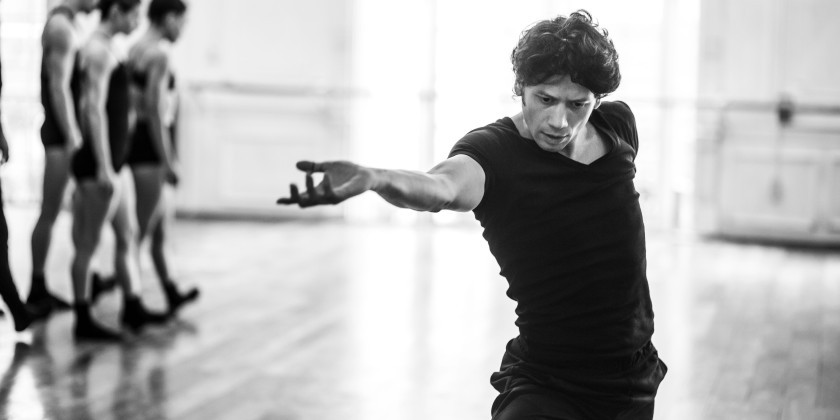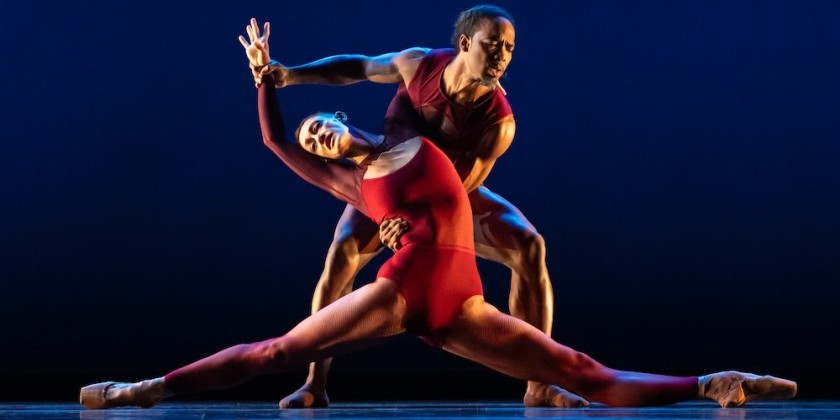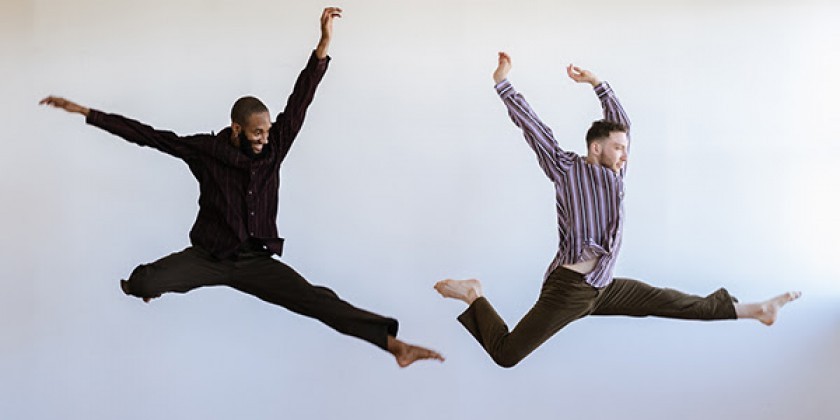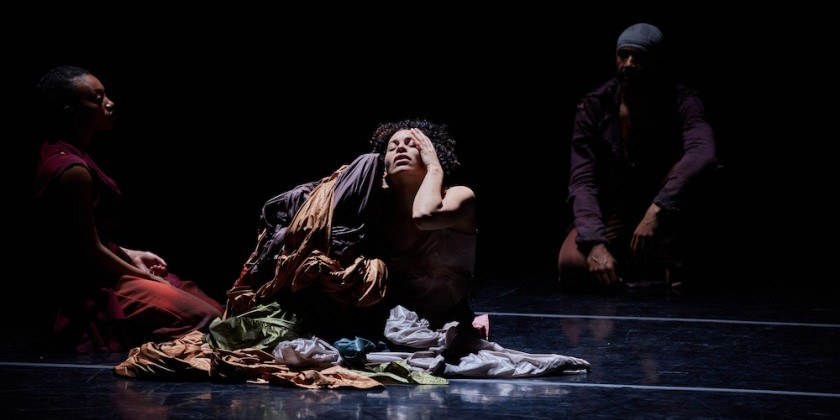IMPRESSIONS: Fouad Boussouf's "Näss" at The Joyce Theater
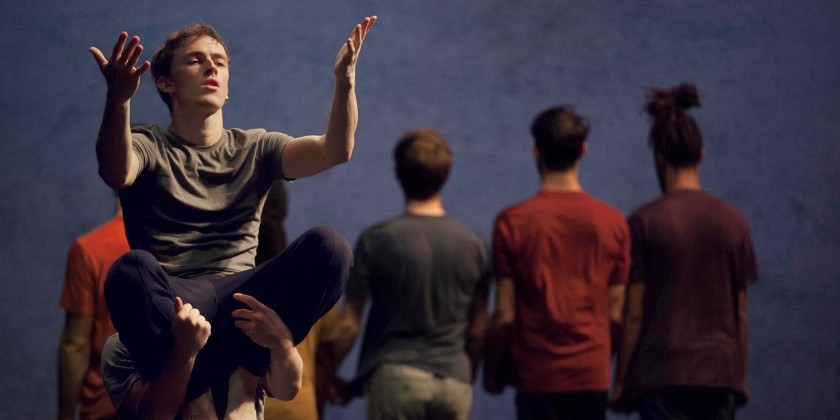
Performance date: October 18, 2022
Presented by: The Joyce Theater
In the distance, the wind howls. Is it moving towards or away from us? The faint sound grows gradually as lights begin to rise on seven shadows facing a cloudy backdrop. The backwards figures and the sound become clearer: We start to realize that they are not moving towards us, but we are moving towards them.
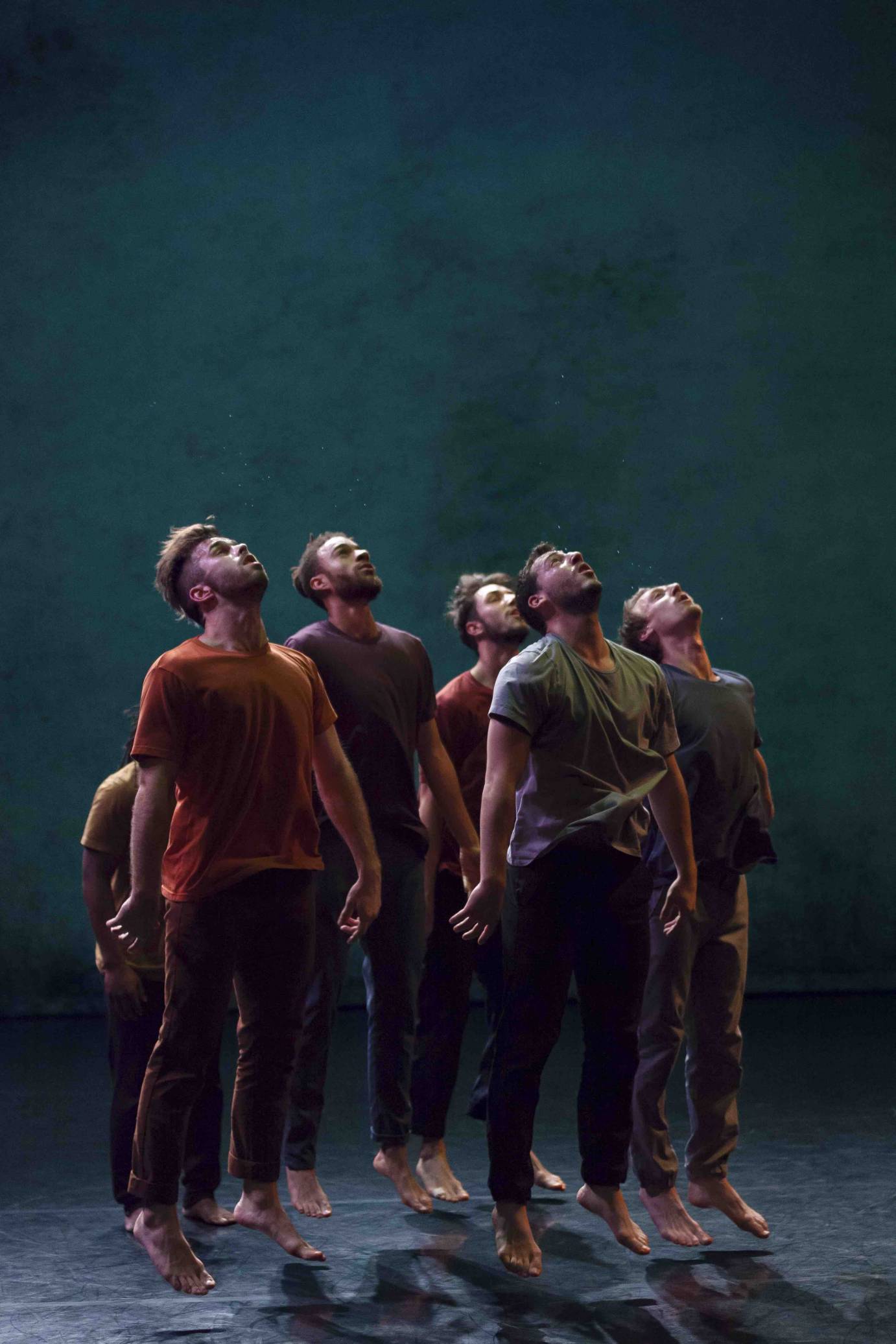
Moroccan choreographer Fouad Boussouf's Näss begins with this slow, supernatural unveiling, transporting its audience as it embarks on a mysterious journey of reverberating rhythm.
The seven men slowly roll down at different times, picking up clothing and putting it on. All of the sudden, as the music begins to turn from sounds of the street to a percussive pulse, the dancers begin a bouncing step which spreads them across the stage. They move in sync to the beat. Sometimes, one would separate himself from the group and stand still, staring up with outstretched hands. A moment of questioning or awe, despair or revelation?
.jpg)
"Näss," which means "people" in Arabic, is inspired in part by the avant-garde, anti-establishment Moroccan band Nass el Ghiwane, whose music Boussouf relates to American rap and hip-hop. The language of the dance is a mix of contemporary hip-hop and breaking, with traditional influences of Gnawa and Reggada, from Morocco.
.jpg)
The choreography is like a HIIT work-out, with the dancers exploding in bursts of athleticism between hypnotic, repetitive footwork. Each dancer has a powerful solo moment full of handstands, floor spins, and flips, sewn together by fluid transitional movements from the upper body. One dancer, Maxim Cozic, stood on his hands and slowly moved his feet, demonstrating incredible balance and control. Shortly thereafter, he shot up six feet into the air, his torso meeting his outstretched legs, folding in half.
There are several duets in which the dancers thrust each other in and away in aggressive contact partnering. In other duets, the dancers play more with the negative space created by each other's absence, sliding and turning through and around their partners.
.jpg)
The costumes, by Camille Vallat, are simple, differently colored t-shirts with pants. In one striking moment, the dancers pull the t-shirts over their heads, stretching them wide like sails. Next, they, pull the shirts back over to cover their faces, appearing like hooded executioners. They are constantly transforming, contrasting their previous group forms as well as each other. The strength possessed by every dancer lets us know that they have the ability to control whatever they want to do. Näss, however, forces them to lose control, to surrender to the rhythm, the vibrations, and to each other.
At the end, the dancers' steady stepping has lifted them off the floor and they begin to jump. In a clump, they move back to where they started, facing the hazy backdrop in a horizontal line. They pop up sporadically as if trying to steal a look over a tall fence. By this point, the sweat flies off of their bodies and they exhale heavily in exhaustion. Boussouf describes his piece, in one way, as "the eternal quest of men and women for someplace else, spiritual or physical." As the lights go dark, we, too, find ourselves out of breath, having not only witnessed this quest, but travelled the whole trip right alongside them.





